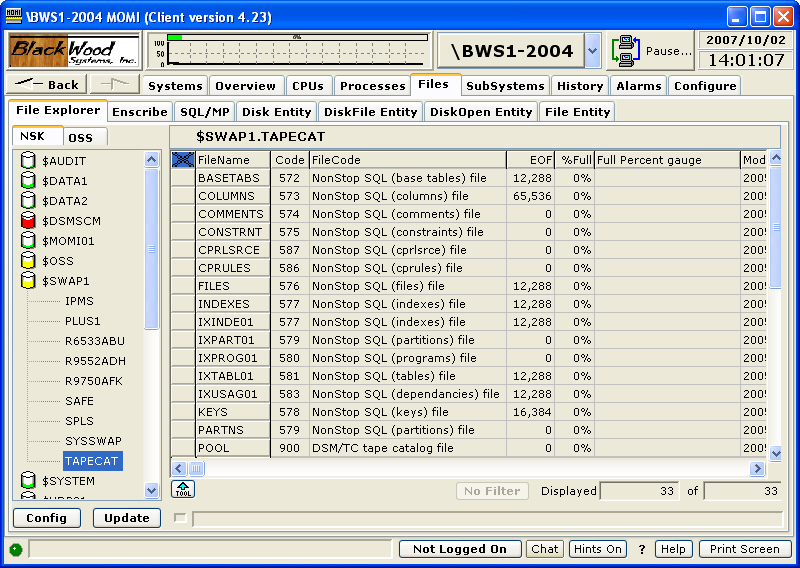

The Files / File Explorer screen provides a powerful high level graphical navigator for NSK (i.e. Guardian) and OSS files. Operations such as drag-and-drop, copy-and-paste and other right-click functions are supported.
On the left side of the screen are listed disk volumes and clicking on a disk volume displays its subvolumes. Clicking on a subvolume displays on the right the files under that subvolume. The disk volume displays in color the approximate percentage full for the disk.
Actions that are available are displayed by right-clicking on a file name.
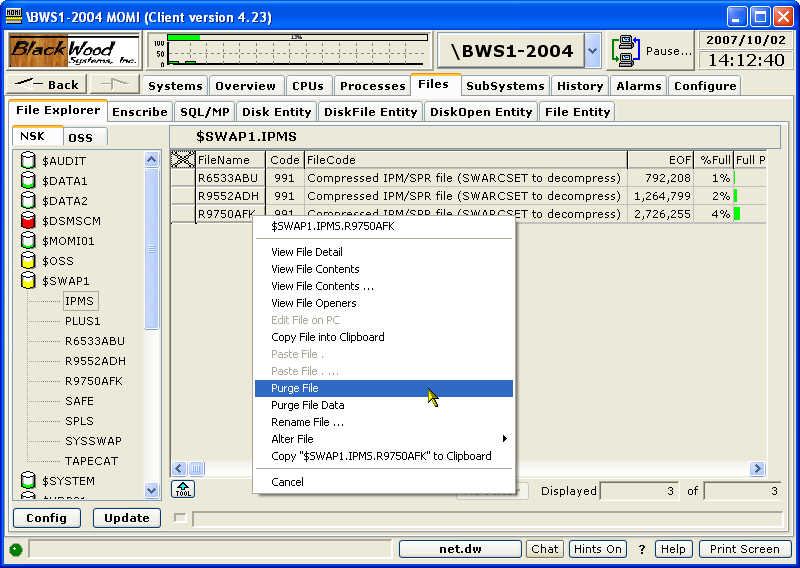
Selecting the OSS tab displays a tree view of the OSS file system on the left and files under the currently selected subdirectory. Subdirectories on the left continue to drill-down if selected.
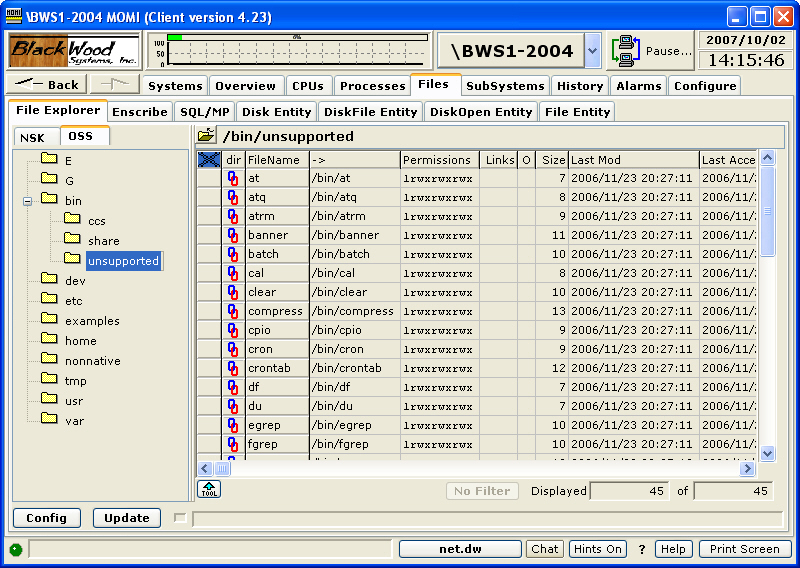
Actions that are available are displayed by right-clicking on a file name.
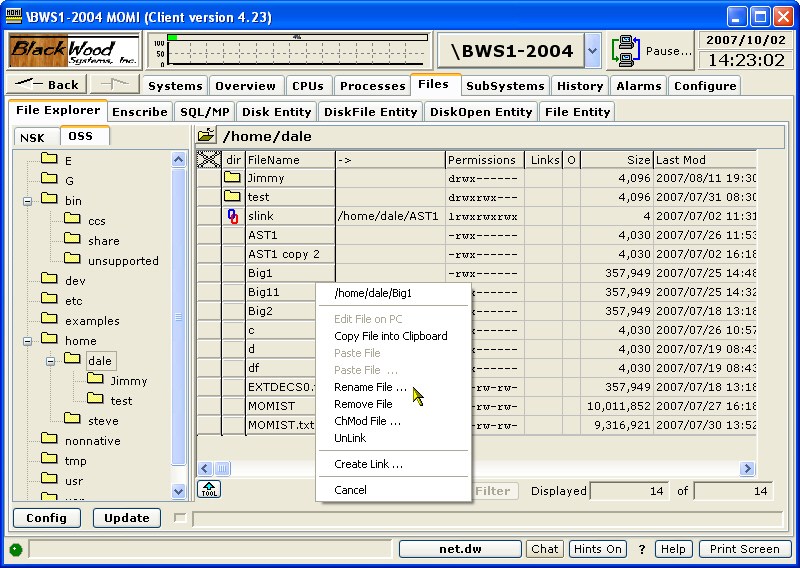
Additional pop-up information is displayed if the mouse is placed over the Permissions field. This pop-up provides a more friendly translation for the security screen field.
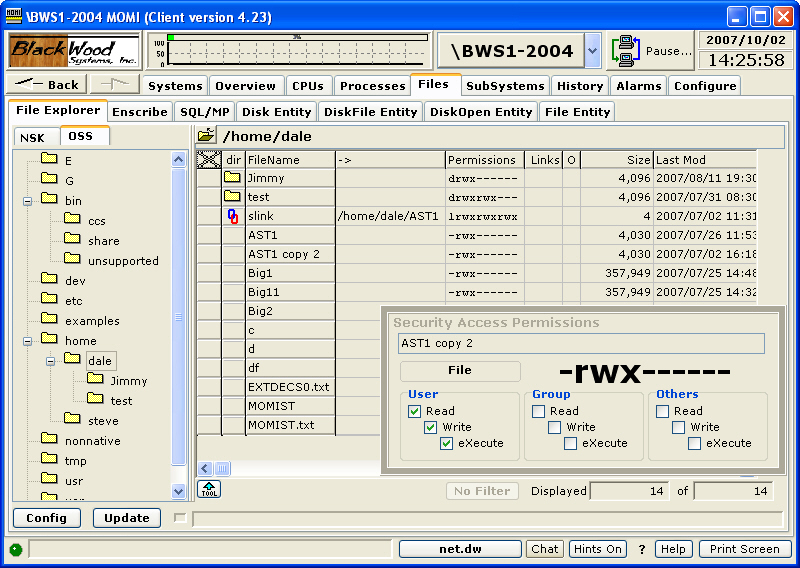
The Config button displays configuration settings for this screen such as the Windows editor to launch when editing a file and sounds played.

The Editor field defines the Windows program that is launched when editing a file. Editing a file involves the following steps: 1) the file is transferred from the NonStop System to the PC using an internal transfer method (FTP is not involved), 2) the Editor is launched and, 3) after exiting the Editor the file is transferred back to the NonStop System (if changed)
The DOS and UNIX format selection determines how line termination is formatted for ASCII files. The DOS Format uses a CR/LF and the UNIX Format uses a LF to terminate a line. This selection determines how the file is prepared for the Editor.
Edit On PC Settings selects various sounds played during file transfers and if an error occurs.
The ASCII File extensions determine when a file is consider ASCII, or a readable text file, and edit is allowed. Otherwise, the file is considered binary and is not editable.